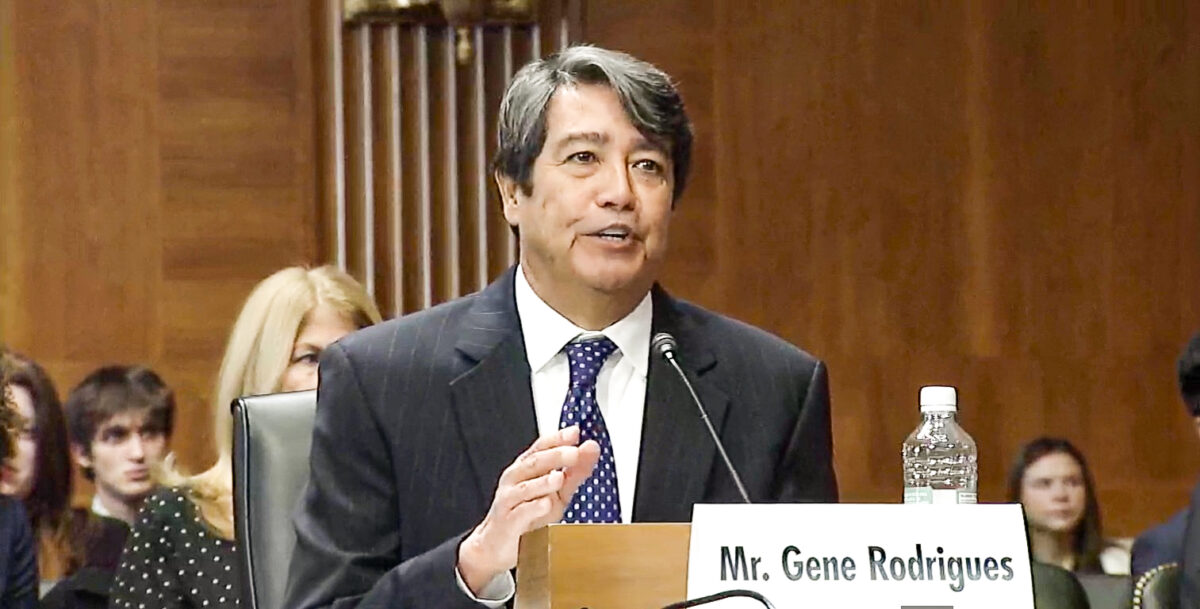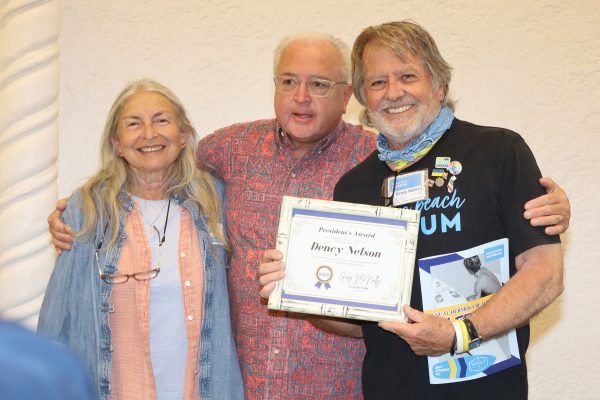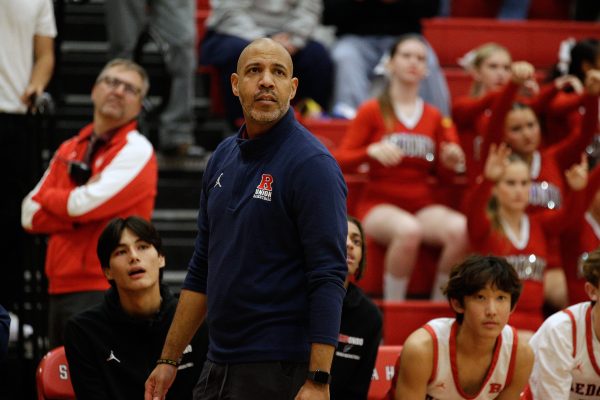by Kevin Cody
“It’s not politics that is driving the transition to a clean energy economy. It’s the march of inevitability. It’s where the world is headed,” Gene Rodrigues said in March 2023, in his keynote address to the South Bay Cities Council of Governments Annual Assembly.
During the talk, he described the United States’ electric grid as “19th Century engineering with 20th century technology.”
In his new job, he said, he hoped “to bring the electrical grid into the 21st Century.”
Two months earlier, President Joseph Biden had nominated the Manhattan Beach attorney and former Southern California Edison executive for the position of Assistant Secretary of the Department of Energy, Office of Electricity.
The position is responsible for what Rodrigues said are the four pillars of the nation’s electric grid: energy, reliability, resilience, security and affordability.
Rodrigues doesn’t know who recommended him to President Biden, but he said, at the time, “I suspect it was my friends in the clean energy industry.”
Rodrigues was four months into retirement when he received President Biden’s call. The former college volleyball player had been working on his beach game at Marine Street, and his six-man, indoor game with his 65-and-over team.
His indoor team was the defending gold medalist at the Huntsman World Senior Games, held annually in St. George, Utah.
“I’m barely six-foot, and play middle blocker. My job is to help get us through pool play so our good guys have fresh legs in the finals,” he said.
He returned to work out of a sense of duty, and to honor his parents.
“I’m the son of a father who was a career military person and a mother who came from Japan and became a U.S. citizen,” he told the energy trade publication RTO Insider. “So, it was ingrained in me since I was a kid that serving the public is not just something you do. It’s an obligation that we all have.”
During his 24 years at SCE, he oversaw the utility’s solar and alternative energy programs.
In 2012, the U.S. Environmental Protection Agency presented him its first-ever Climate Leadership Award.
In 2022, Rodrigues received the Charles H. Percy Award from the bipartisan Alliance to Save Energy. The Alliance was founded by Republican Senator Charles H. Percy and Democratic Senator Hubert Humphrey in response to the 1970s oil crises.
Last year, the California Efficiency and Demand Management Council presented Rodrigues with the Art Rosenfeld Achievement Award. Rosenfeld, a UC Berkeley physicist, and “Godfather of Energy Efficiency,” was a personal friend and mentor to Rodrigues.
Next month, Rodrigues will be inducted into the Clean Energy Hall of Fame by the California Energy Commission for his “decades spent advancing clean energy across the country.”
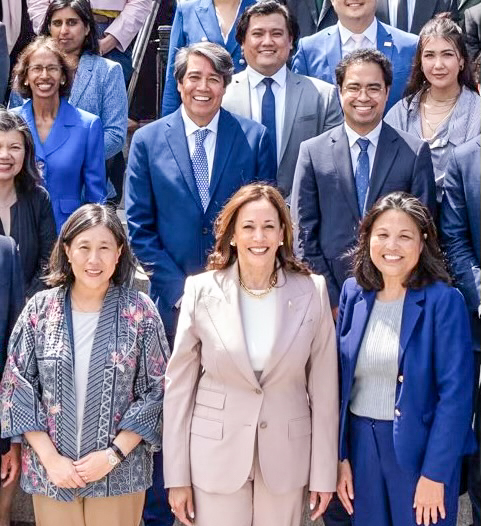
Winding down
Last Saturday, Rodrigues returned home from Washington D. C., where he is winding down work at his DOE office in the historic Forrestal Building.
“The Forrestal Building is on the National Mall. As you enter the building you see the Washington Monument to your right and the White House to your left. It’s an inspiring place to work,” Rodrigues said during a phone interview Saturday morning.
The Forrestal Building lobby is also inspiring, though for a different reason. Its guards are heavily armed because DOE is responsible for the nation’s nuclear arsenal. DOE succeeded the Atomic Energy Commission, Rodrigues said.
Rodrigues will tender his resignation the day Donald Trump is inaugurated President.
“Every administration wants senior leadership positions filled with their own people,” Rodrigues explained.
Coincidentally, Saturday afternoon, President-elect Donald Trump announced Chris Wright as his nominee for Secretary of Energy. Wright is CEO of Liberty Energy, a Denver-based fracking company.
His appointment foretells a policy change at the Department of Energy from the Biden-Harris net-zero carbon emissions by 2050 to Trump’s campaign promise to “Drill, drill, drill,” as he told Fox News host Sean Hannity, immediately after telling Hannity he would not be a dictator, “except for day one.”
Wright stated in a video on his LinkedIn website, “There is no climate crisis, and we’re not in the midst of an energy transition either.”
“We have seen no increase in the frequency or intensity of hurricanes, tornadoes, droughts or floods despite endless fear mongering of the media, politicians and activists….The only thing resembling a crisis with respect to climate change is the regressive, opportunity-squelching policies justified in the name of climate change.”
Rodrigues was on a flight back to Washington DC Sunday morning, when he responded, by email, to what he thought of Wright’s appointment.
“It is my fervent hope,” Rodrigues wrote, “that the incoming Secretary of Energy will follow [current DOE] Secretary Jennifer Granholm’s example of embracing science over the politics of the moment, and of protecting investments being made today that will preserve America’s energy leadership and national security for the next century.” (Editor’s note: See accompanying sidebar for Rodrigues’ complete response.)
During Saturday’s interview, Rodrigues said current Secretary of Energy Granholm, “As the former governor of Michigan, Granholm understands manufacturing’s need for reliable, affordable energy, and the tie between energy reliability and economic prosperity.”
He said when asked his thoughts about the Trump administration’s energy policy, “Right now, in my office, we’re focusing on ensuring a smooth and seamless transition for the incoming administration.”
“I believe there is common ground in this country around energy reliability, resilience, security and affordability. If the new administration remains focused on those things we can ensure America has the most reliable electric grid in the world, as well as economic security, and the strongest national security of any nation.”
Rodrigues cited fracking, and nuclear power as examples of common ground with the new administration.
“Like in any portfolio, you need a diversity of energy resources to ensure reliability,” he said.
“Just one floor down from me at DOE is the Office of Fossil Energy and Carbon Management. You don’t have to say no to fossil fired energy. You just have to understand how to manage its carbon emissions.”
“The same technology that allows fracking,” he noted, “has the potential for very efficient geothermal energy. If you tap into the geothermal energy, you already have the hot water that creates steam that can turn a turbine. And it can provide ‘district heating’ for homes.”
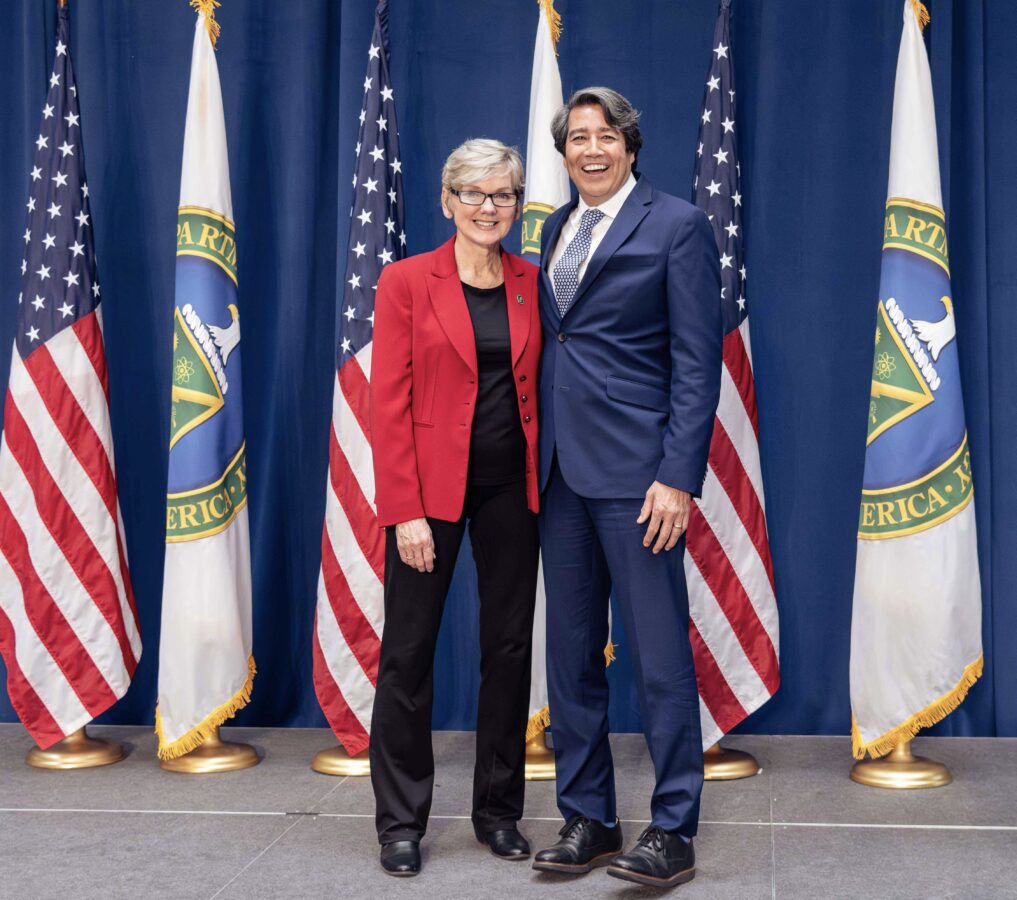
Government’s role
“Our electrical grid is the envy of the world. But it won’t remain that way without increased Federal investment and coordination,” Rodrigues said.
Ironically, he pointed out, the reason Federal investment and coordination are necessary is because the United States does not have a national grid. It has regional grids governed by State utility commissions. Because of this, cost allocation is in constant dispute, Rodrigues said.
Federal funding addresses this problem by assuring contractors of payment for interstate projects.
Rodrigues gave another example of how DOE’s work is vital to a healthy economy, contrary to DOE Director nominee Wright’s comment about DOE’s “regressive, opportunity-squelching policies justified in the name of climate change.”
“One of the first emails in my inbox at the Office of Electricity was about transformer cost increases and delivery delays,” he said.
“People think DOE’s greatest power lies in safeguarding America’s nuclear arsenal. But more important is its ‘convening’ power. When the Department of Energy convenes a meeting, everyone shows up.”
“To solve the transformer shortage, I convened a meeting of every transformer manufacturer in the United States, every utility, the labor unions and national security representatives. We sat around the table, and we came up with approaches that in 18 months’ time, stopped the cost increases and delivery delays.”
“That’s how government intervention helps — when it’s proactive, not reactive.”
“We just had two large hurricanes, back to back, in the Southeast. (Hurricane Helene in September, and Hurricane Milton in October). If they had happened before we fixed the transformer shortage, the first hurricane alone would have created much greater economic damage because restoring power would have been delayed. We went through the two hurricanes without a shortage of transformers.”
“The way for the Federal government not to be seen as some interloper who’s slowing things down is to bring all the stakeholders to the table and figure out how we can use the powers of the Federal Government to prepare, rather than just reaching out when problems arise.”
“You see that in the technical assistance we offer,” he said.
The Department of Energy has 17 National Research Labs, three of them in northern California: The Lawrence Berkeley National Laboratory, the Lawrence Livermore National Laboratory and SLAC (Stanford Linear Accelerator Center). The labs are offspring of the 1943 Manhattan Project’s Los Alamos Laboratory.
“Because the National Labs are well funded they can attack really big, complex issues. They don’t have to focus only on issues that promise near term economic returns. And since they’re working in the public interest, we can share everything that comes out of the labs with the private sector.”
“My office manages the Grid Modernization Initiative (GMI), which brings together teams of lab researchers,” he said.
He described several projects the teams are working on.
“When I started at Southern California Edison 30 years ago, we talked about the wildfire season. Now fire season is year ‘round, and no longer limited to the western United States. The fires are stressing the reliability of America’s grid,” he said.
DOE’s National Labs have addressed the problem by developing and deploying advanced conductors that allow more energy to flow through the electric grid with less heat.
“Because the wires have less heat, they are less prone to sag, and spark fires. And if they do start a fire, we can identify the location of the fire,” Rodrigues said.
Another research area involves large “grid scale storage” for solar panels and wind farms.
“We’re looking not just at lithium ion but all kinds of battery chemistries,” he said. Grid Scale Storage makes solar and wind energy more economical and more reliable.
“This year, at the Pacific Northwest National Lab we built a Grid Storage Launch Pad for private developers to use in researching their own energy storage technologies,” he said
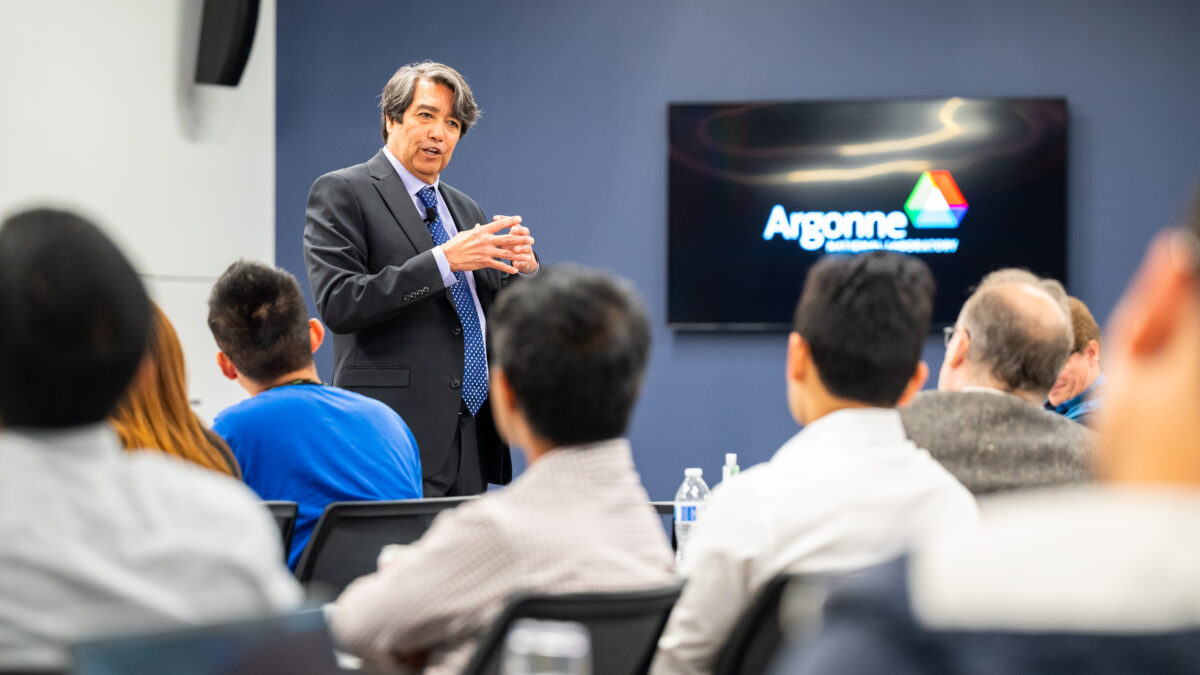
Islands of resiliency
The National Labs are also working on “micro grids” for areas that have strong energy and redundancy requirements, Rodrigues said.
“Think of universities, hospitals, military bases, and rural or island communities,” Rodrigues said.
“I’ve been to Alaska three times to visit Senator Lisa Murkowski. Away from the Alaska Railroad, communities in Alaska are served by micro grids, but with 50-year-old technology. They use giant diesel generators, which are dirty, and incredibly expensive to operate because the diesel fuel has to be shipped in, and it’s subject to wild swings in cost. We’re trying to move them toward not just cleaner, but more economical and reliable energy sources,” Rodrigues said.
“The micro grid technology is proven. Now the challenge is to expand their use so we have more of what we call ‘islands of resiliency’ that take advantage of a mix of whatever resources are locally available. It doesn’t mean that they are all off the larger grid. It just means they’re offsetting some of the grid load,” he said.
Tactical nukes
“I also spent a lot of time at our Idaho National Lab, where our Office of Nuclear Energy is looking at how to integrate small modular reactors (SMR) into the grid.”
“The history of nuclear power in the United States is a sad tale due to a lack of design standardization, which leads to construction cost overruns. We have a saying at DOE. ‘Everyone wants to be the first to be second,’” he said.
“The idea of SMRs is to build them to fit a purpose, like powering a generative AI data center. We’re seeing a massive increase in electrical demand across the grid because AI data centers use 10 times more energy than traditional data centers,” he said.
Disposal of nuclear waste remains an unsolved problem. It continues to be stored onsite, he acknowledged.
“A lot of approaches are being examined, but I don’t know how much I can talk about them,” he said.

Planning for now
Rodrigues characterized the Biden-Harris Department of Energy as “outwardly focused.”
“Historically, the Department of Energy was seen as a research and development organization. The Biden-Harris focus was not just on charting a path forward, but building what I call the 21st Century Grid.
“The idea was to bring jobs back, good paying union jobs to implement a new, clean energy, industrial policy for America.”
Rodrigues said he’s hopeful DOE’s work during the Biden-Harris administration won’t be derailed by the Trump administration, despite Trump’s campaign promise to cut funding for the Bipartisan Infrastructure Law.
Congress has already approved infrastructure spending of $62 billion in 2025 across all 50 states, including Republican Senator Murkowski’s Alaska.
“The difference between campaign announcements and energy policy can be very different. Congress and the States will have a tremendous say in cuts,” he said.
Rodrigues recalled his own confirmation process as basis for hope that the new administration won’t cut DOE spending on the electric grid’s diverse power sources.
“When I was nominated by President Biden, I spent a lot of time on the Hill with senators from both parties.
“No matter what their politics, every senator I met agreed on the importance of our energy supply.
“Even in that, quite frankly, divided time in our country, the decision was made in the Senate not to block or slow down my confirmation. I went through on what’s called unanimous consent, with a voice vote.
“The fact is red states, blue states and purple states all recognize power issues are tactical issues for our nation,” Rodrigues said. ER

